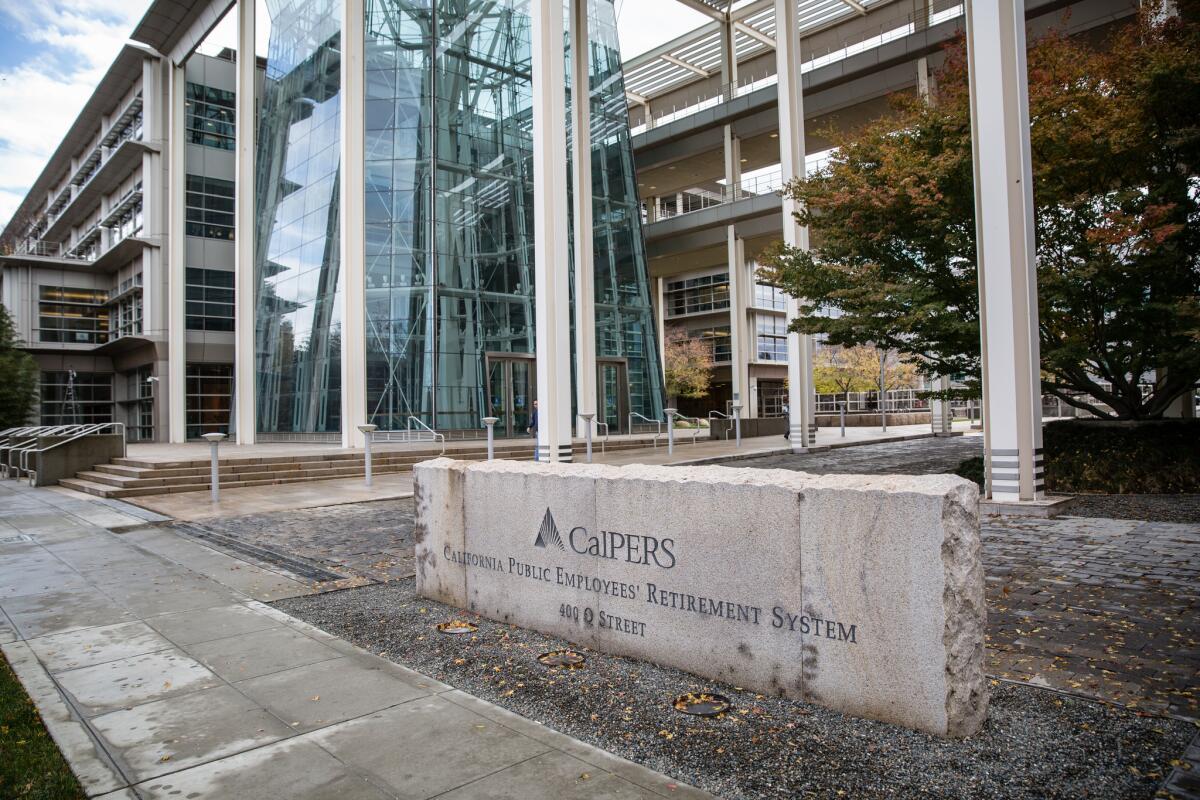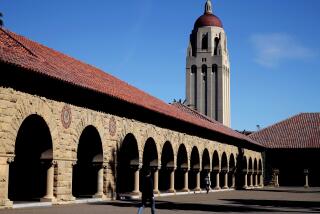CalPERS posts worst year since 2009, with slim returns

- Share via
California’s largest public pension fund made a return of less than 1% in its most recent fiscal year, the fund’s worst performance since 2009.
The California Public Employees’ Retirement System said Monday that its rate of return for the year ended June 30 was just 0.61%. What’s more, Ted Eliopoulos, the pension fund’s chief investment officer, said the poor year has pushed CalPERS’ long-term returns below expected levels.
“We have some challenges to confront,” Eliopoulos said during a conference call. “We’re moving into a much more challenging, low-return environment.”
CalPERS assumes that, in the long-term, it will earn investment returns averaging 7.5% a year. If the fund fails to meet that goal, the state’s taxpayers could be forced to make up any shortfall in pension funding.
Now, after two consecutive years of lackluster returns, CalPERS’ long-term averages have fallen below that crucial benchmark. Over the past 20 years, average investment returns now stand at 7.03%. Returns over the last 10 and 15 years now average less than 6%.
At this time last year, the fund had averaged annual returns of 7.8% over a 20-year period.
Over the past few years, many public pension funds have lowered their expected annual returns, according to pension consulting firm Milliman, and CalPERS could do likewise. That would increase pension costs for state and local government agencies that have employees covered by the pension giant.
Such a change is likely more than a year away, though. CalPERS next year will reassess its investment strategies, a process that, starting in 2018, could lead the pension fund to change how it manages its money and to lower its return expectations.
“We quite clearly have a lower return expectation than we had just two years ago,” Eliopoulos said. “That will be reflected in our next cycle. We are cognizant that this is a challenging environment for institutional investors.”
CalPERS last lowered its expectations in 2012, cutting anticipated returns to 7.5% from 7.75%, where they had stood for more than a decade.
CalPERS officials had recommended the rate be cut further, to 7.25%. But government agencies that pay into the pension system on behalf of their employees said that large of a reduction in expected returns would cut too deeply into their budgets.
As expected returns go down, the amount local governments have to pay for pension benefits rises. And small changes in expected returns can add up to big changes in what government agencies have to pay.
The shift from 7.75% to 7.5% in 2012 increased the state’s annual pension bill by $167 million. That doesn’t include the additional cost to local governments.
Last year, the CalPERS board approved a plan that could gradually lower the pension fund’s expected rate of return to 6.5%, but — paradoxically — only cuts the expected rate in years of outsized investment gains.
CalPERS saw positive returns in a few types of investments last year. Its bond portfolio saw a particularly dramatic uptick of 9.3%, in line with a global bond rally driven by economic turmoil.
But the same factors that drove up the value of bonds cost CalPERS in other areas, specifically its stock investments, which make up more than half of the pension fund’s portfolio and lost 3.4% for the year.
During the same period, the Global Dow index, which tracks global stocks, fell 8.5%.
CalPERS also lost money on its investments in forest land, where its holdings lost 9.6% of their value. Forest land accounts for only 1% of the pension fund’s overall portfolio, however.
In a statement Monday, Eliopoulos said he was proud of eking out a positive return in a year of market volatility.
Since an investment loss of nearly 24% in the year ended June 30, 2009, CalPERS has seen annual returns fluctuate wildly, with double-digit gains in some years and tiny gains in others. For the years ended in June of 2012 and 2015, the fund earned 1% and 2.4%, respectively.
Follow me: @jrkoren
ALSO
Philippe Dauman paves the way to leave Viacom as CEO if he’s ousted from the board
21st Century Fox says it’s still reviewing harassment allegations against Fox News chief Roger Ailes
Yahoo says it paid too much for Tumblr and posts weak second-quarter results
More to Read
Inside the business of entertainment
The Wide Shot brings you news, analysis and insights on everything from streaming wars to production — and what it all means for the future.
You may occasionally receive promotional content from the Los Angeles Times.











